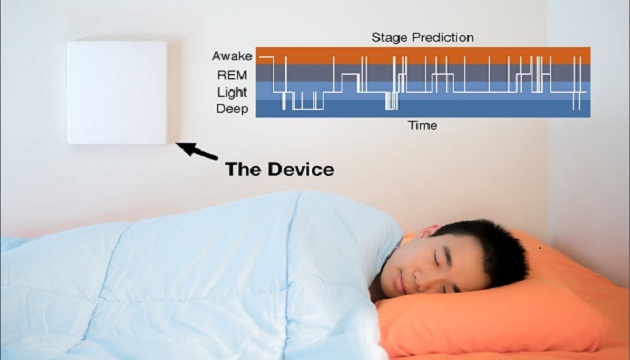Sleep is as essential as air and food but with today’s uneven lifestyle and busy scheduled people often suffers with sleep disorders. Sleep disorders not only effect the health but also arises problems in day to day activity. In order for physicians to diagnose these disorders, patients must spend a night in a sleep lab hooked up to electrodes and sensors, which can be unpleasant and nerve-racking.
MIT researchers have now come up with a way to wirelessly capture data on sleep patterns from the comfort of a patient’s home. Their laptop-sized device bounces radio waves off a person, and a smart algorithm analyzes the signals to accurately decode the patient’s sleep patterns.
The device could allow experts to monitor someone’s sleep for weeks or months rather than once every few months in an overnight lab. Apart from enabling physicians to diagnose and study sleep disorders, they could also use it to understand how drugs or illnesses such as Parkinson’s disease, Alzheimer’s disease, epilepsy, and depression affect sleep quality.
“Doing this wirelessly in your own bedroom, you could really see the impact of drugs, and progression of diseases by long-term monitoring,” says Dina Katabi, a professor of electrical engineering and computer science at MIT who led the work.
During sleep, we cycle through three different sleep stages: light, deep, and REM. Fitness bands and phone apps use accelerometers to track a person’s sleep patterns, but they don’t produce data on sleep stages that is accurate enough for medical use, Katabi says.
The new RF system combines information on breathing, pulse, and movements to decipher sleep stages with 80 percent accuracy, about the same as lab-based EEG tests. The researchers tested the system on 25 volunteers over 100 nights of sleep.
The device transmits RF waves at one-thousandth the power of Wi-Fi signals and picks up signals reflected from walls, furniture, and sleeping subjects, whose tiniest movements change the frequency of the reflected signal. The deep neural network algorithm extracts the relevant sleep-related signals from the jumble of reflected signals and translates the data into meaningful sleep stages.









